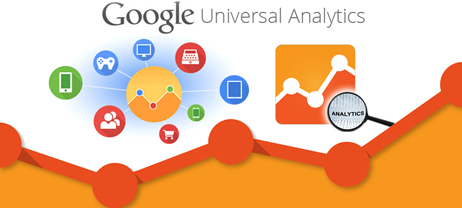Google analytics is the best analytical and statistical tool. It helps businesses to analyse their websites’ performance. It presents factual data so that business owners can make smart decisions. If used systematically, it can improve business opportunities as well as minimise risk. However, most businesses are yet to explore its real potential.
Businesses should use this incredible powerful tool to:
- have business insights
- analyse traffic sources
- study consumer’s behaviour
- monitor and identify issues
- research qualitative aspect,
- identify risk and opportunity factors
- track referral traffic
- stay ahead.
Google Analytics can make any website efficient and effective
Google Analytics is easy to install (through a tracking code) and manage (through its properties). Businesses owners not only gain actionable insights, but can also set up goals to measure the success of their online marketing efforts.
Here are a few aspects that need to be understood:
- Goal Setting – This is the best way to measure the effectiveness of your efforts. You can analyse the conversion path of your customers with the help of goal setting. In addition, you can set many goals for your website according to your business objectives.
- View data - Google Analytics allows you to read and analyse statistical data. You can learn about your website’s traffic and view audience’s report. You can monitor sessions, users, and page views, bounce rate, content, speed, landing pages, and even compare them.
- View acquisition – This is helpful to understand traffic channels as well as specific sources that are driving traffic to your website. You can learn about traffic coming from social networks, etc. If you want, you can connect Google Analytics to Google Webmaster Tools to learn more about search traffic to improve your knowledge and adjust your strategies.
- Behavioural statistics – If you want to keep a track of the top performing pages of your website, you must use "Behaviour report". You will also learn about the website’s speed through this section.
- Conversions – If you have set a goal, you can understand how many conversions have been received. You can rework on your strategies and set more goals for your website on the basis of your findings.
- Event Tracking – This is the best way to learn user’s behaviour when they visit your website. Just by adding a code on a specific tab, image, banner ad, button or text link, you can track and analyse events. (Events are user interactions with your website’s content) (Anatomy of Events- Category, Action, Label (optional, but recommended) and Value).
Quick tips:
- Track audience’s locations.
- Always examine visitor’s activities.
- Analyse keyword performances.
- View unique visitors and their total number of pageviews.
- Check your backlinks via referrals.
- Understand the important concept of Goal Conversions.
- Find and remove irrelevant backlinks linking to your website.
- Perform multiple tests on your content for better traffic.
- Analyse your high and low quality pages through "landing pages".
- Manually search the source code to ensure the presence of tracking ID.
- Export the report in pdf or excel format for further data analysis and evaluation.
Conclusion
This shows that Google Analytics gives you the true picture of your website, like actual speed, traffic sources, and overall customers’ behavioural trends, etc.





